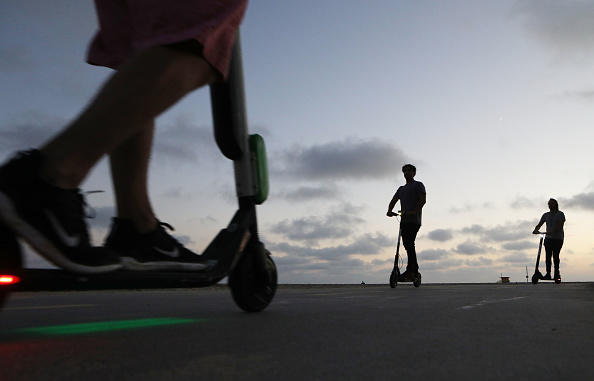Scooter sharing systems have become increasingly popular across the United States as people look for efficient ways to get around. Companies like Bird, JUMP, and Lime all boast dockless e-scooters that make travel simple — but, how safe are they?
At the request of Austin Public Health and the Austin Transportation Department, the Centers for Disease Control and Prevention has launched the first-ever investigation into e-scooter injuries, as reported by CNBC.
“We want to identify the risk factors for those who get injured, how severe the injuries are, and why they’re getting hurt,” Jeff Taylor, manager of the Epidemiology and Disease Surveillance Unit with Austin Public Health, told CNBC.
Taylor will be overseeing the study, along with three epidemiologists from the CDC. They’ve actually collected their data already, so the study is now being summarized for its final report, according to Engadget.
Most people know that new technology always has kinks to work out and the e-scooter industry is still in its infancy. Although the sharing of scooters started in 2012 when Scoot Networks launched in San Francisco. Dockless e-scooters only started popping up in 2017, as reported by CityLab.
Since then, dockless scooter companies have expanded to more than 100 U.S. cities and at least half a dozen other countries, according to CNBC. In that time, officials at trauma centers in cities like Austin, Los Angeles, and Washington D.C. have all seen a rise in scooter-related injuries.
Recently, Consumer Reports released a study that found at least 1,500 e-scooter injuries across the United States. For their study, Consumer Reports talked to 110 hospitals and five agencies in 47 cities where at least Bird or Lime — who make up the two biggest scooter companies — operates.
Many people expressed concern about the availability of helmets. The medical director of Vanderbilt University Medical Center’s trauma ICU, Oscar Guillamondegui, expressed his concern in particular in the Consumer Report study:
“Who’s carrying a helmet with them? I have only seen one person wearing a helmet. And that was my son, because I demanded it.”
-Consumer Report, E-Scooter Ride-Share Industry Leaves Injuries and Angered Cities in its Path
These concerns seem to be backed up by the CDC’s study. According to CNBC, 98 percent of people injured weren’t wearing a helmet, 48 percent of people had a blood alcohol level above the legal limit, and 52 percent tested for an illicit substance.
As e-scooters continue to spread, the CDC’s study could impact policies and regulation put in place. It may also lead to some individual changes with each company — especially when it comes to helmets and using a scooter while intoxicated.
The CDC will release its study and recommendations in the spring.

